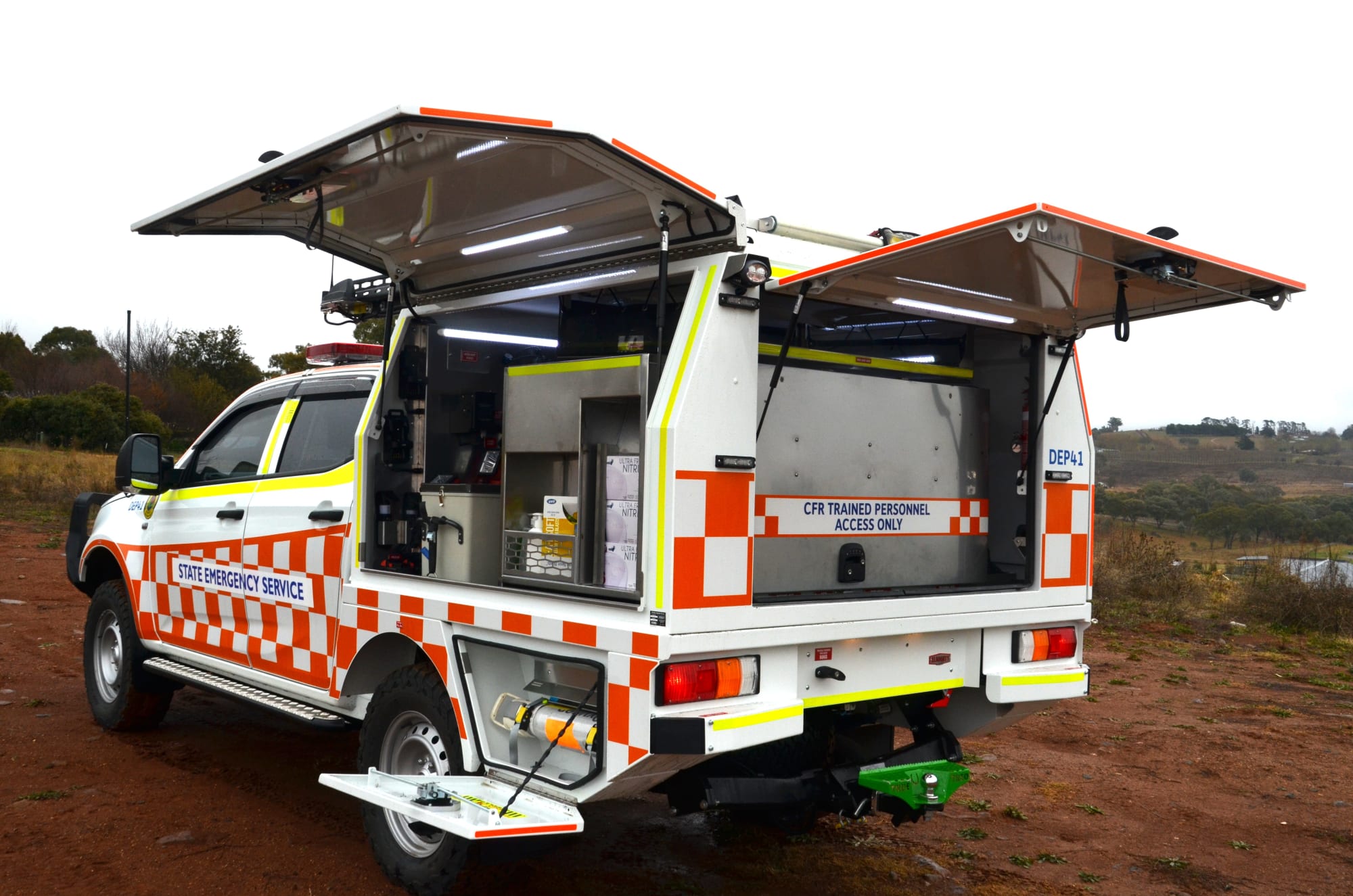Invest
Australia’s growth beat is real — but it’s the wrong kind for capacity
Invest
Australia’s growth beat is real — but it’s the wrong kind for capacity
Australia’s economy outpaced forecasts in the June quarter as households opened wallets and government spending did the heavy lifting, even as public investment sagged. The signal for boardrooms: short-term revenue tailwinds alongside medium-term capacity risk if private capex stays on ice. With GDP up 0.6% quarter-on-quarter and 1.8% year-on-year, the cycle has shifted from cost squeeze to demand capture — but the investment window for 2026 is closing fast. Leaders who price with precision, manage working capital aggressively and pre-commit smart capex will bank the upside while competitors wait.
Australia’s growth beat is real — but it’s the wrong kind for capacity
Australia’s economy outpaced forecasts in the June quarter as households opened wallets and government spending did the heavy lifting, even as public investment sagged. The signal for boardrooms: short-term revenue tailwinds alongside medium-term capacity risk if private capex stays on ice. With GDP up 0.6% quarter-on-quarter and 1.8% year-on-year, the cycle has shifted from cost squeeze to demand capture — but the investment window for 2026 is closing fast. Leaders who price with precision, manage working capital aggressively and pre-commit smart capex will bank the upside while competitors wait.

Australia’s headline numbers surprised on the upside, but the underlying composition matters more than the beat. GDP rose 0.6% in the June quarter (vs 0.5% expected), lifting annual growth to 1.8% — the strongest since late 2023 despite full-year growth of just 1.3%, one of the softest in decades excluding the pandemic slump. The engine was household consumption and government outlays; public investment fell, and business investment remained subdued. That mix delivers revenue now but stores up supply-side risk later.
The signal in the noise: why the beat matters for boardrooms
Translate the national accounts into operating KPIs and you get three priorities. First, demand is back in discretionary pockets, especially services, so volume recovery is possible where price-led revenue dominated 2023–24. Second, margin math is improving as inflation cools but input costs remain sticky — pricing needs to shift from blanket increases to micro-yield management. Third, capacity constraints will reappear in 2026 unless private capex turns: watch lead times, workforce availability, and financing spreads as your early-warning system.
In short: monetise demand now, but build option value for investment when rates and policy clarity allow.
Demand drivers unpacked: what actually moved GDP
Households did more of the lifting. Easing inflation and mid-2024 personal income tax changes boosted disposable incomes, while pent-up services demand persisted. Government consumption added further momentum — think health, education and defence activity — even as public investment contracted, reflecting timing effects across major projects. Net exports contributed little overall as stronger domestic demand pulled in imports.

Framework lens — cyclical vs structural: the consumption lift is largely cyclical (real incomes stabilising, confidence off the lows), not structural productivity-driven growth. Government demand is policy-determined and reversible. Meanwhile, lagging private capex signals caution about longer-run capacity — a structural concern for 2026–27.
Sector scoreboard: retail revival vs construction drag
Retail and services saw the clearest turn. Discretionary categories such as hospitality and travel benefited from improving real incomes and aggressive end-of-financial-year promotions, while grocery volumes stabilised and private-label mix expanded — a margin lever for supermarkets. Digital and omnichannel investments made in 2022–23 are now paying off as retailers convert traffic into higher attachment rates and lower fulfilment costs.
Construction remains split. Engineering activity tied to public projects is rolling over as program timing shifts, while residential is constrained by approvals bottlenecks, financing costs and labour tightness. Commercial property capex stays selective; landlords and tenants are renegotiating footprints around hybrid work and fit-out costs. For suppliers, that means lumpy order books, elongated sales cycles and heavier reliance on framework agreements.
Pricing, wages and margin math
Inflation has eased from its peak but remains above the Reserve Bank of Australia’s target band, while wage growth is solid and productivity mixed. That makes blanket price rises a blunt instrument. Better playbooks are: dynamic promos using contribution-margin thresholds; indexation clauses tethered to verifiable cost drivers; and SKU-level rationalisation to trade customers into higher-margin alternatives. In labour-intensive services, a mix of multi-skilling, AI-assisted scheduling and throughput analytics can protect margin without resorting to across-the-board price hikes.
Working capital is the quiet hero of this phase. With volumes normalising, inventory turns should improve, but demand variance is high. Tighten S&OP cadence, commit to vendor-managed inventory where suppliers can carry buffer stock, and use early-pay discounts to harvest risk-free returns if cash is abundant.
Why capex is lagging — and how to time the cycle
Boards are hesitating for three reasons: interest rate uncertainty, policy ambiguity on infrastructure sequencing, and mixed global signals on trade and tariffs. The hurdle rate problem is real: when the cost of capital is volatile, option value rises and investment defers. Leading indicators to watch: equipment finance approvals, building approvals, hiring intentions, and bid pipelines for government tenders.
Timing strategy: pre-invest in low-regret capacity (automation retrofits, cybersecurity, data infrastructure), keep shovel-ready projects through design and approvals, and negotiate contingent procurement with price locks where possible. Use flexible financing — a blend of operating leases for equipment, green-linked loans where applicable, and covenant-light tranches — to keep optionality without overcommitting balance sheet.
Policy and scenarios: what the RBA and Canberra do next
Policy is the swing factor for H2 2025–2026. The RBA remains data-dependent as inflation trends lower but not yet home; fiscal support from government consumption persists even as public investment dips. Industry research desks are cautious: one major global bank expects slower growth in H2 2025 — around 1.0% in Q3 and 0.5% in Q4 — citing policy uncertainty and trade frictions as drags on business investment and household spending, while noting solid labour markets limit recession risk. For planning, build three scenarios:
- Base case: growth moderates as consumption normalises; RBA holds then eases as inflation nears target; AUD range-bound; capex picks up late 2026. Action: price for value, protect service levels, advance shovel-ready designs.
- Downside: external shock or tighter global financial conditions; unemployment edges up; discretionary spend fades. Action: trigger cost and capex gates, pivot to resilience SKUs/services, intensify collections and supplier risk scoring.
- Upside: faster disinflation and clearer policy pipeline for infrastructure; earlier rates easing; business confidence turns. Action: accelerate capex, lock in long-dated supply and talent, lean into export channels where FX is favourable.
The executive playbook: five moves for the next 12 months
1) Precision pricing: move from broad increases to micro-segmentation, A/B test promo depth, and deploy real-time elasticity models to defend gross margin without sacrificing share.
2) Inventory agility: build dual-speed inventory — fast lanes for high-velocity SKUs with dynamic safety stock; slow lanes with tighter MOQs and vendor consignment to release cash.
3) Workforce productivity: offset wage pressure with scheduling optimisation, task automation and throughput benchmarks; invest in training that lifts revenue per labour hour in frontline roles.
4) Capex option value: maintain a portfolio of small, quick-payback projects (12–18 months) while preserving call options on larger bets; secure price holds on key equipment and standardise designs to compress lead times.
5) Balance sheet resilience: extend debt maturities opportunistically, hedge rate exposure where repricing risk is high, and use supply contracts with escalation/de-escalation clauses to cushion commodity swings.
The mix of household and government-led growth gives businesses a near-term revenue window. The leaders will bank it through disciplined margin management and convert it into durable advantage by being investment-ready the moment the cost of capital breaks in their favour.

Economy
Global deal activity declines by 6% amid economic uncertainty, reports GlobalData
In a year characterised by economic turbulence and evolving market conditions, global deal activity has witnessed a notable downturn during the first ten months of 2025. According to GlobalData, a ...Read more

Economy
Australia’s softening labour market puts another RBA cut in play — here’s what business should do now
A four-year high in unemployment has revived expectations the Reserve Bank could deliver another rate cut as soon as November. With quarterly GDP growth running at 0.6 per cent and annual growth at ...Read more

Economy
Rising CPI reinforces RBA’s stance as rate cut expectations remain: State Street
State Street Global Advisors says the Reserve Bank of Australia (RBA) is likely to hold its current policy outlook following the release of September quarter inflation data, which showed an unexpected ...Read more

Economy
NSW SES boosts tsunami preparedness ahead of World Tsunami Awareness Day
As World Tsunami Awareness Day approaches on 5 November, the New South Wales State Emergency Service (NSW SES) is ramping up efforts to enhance tsunami preparedness along the east coastRead more

Economy
Lifesaving Regional Response Strengthened with New NSW SES Vehicles
In a significant boost to regional emergency services, the NSW State Emergency Service (SES) has unveiled 11 new Community First Response (CFR) vehicles, designed to enhance the speed and safety of ...Read more

Economy
Australia's June quarter GDP growth driven by consumer and government spending
Australia's economy has shown unexpected resilience in the June 2025 quarter, with household and government consumption driving growth despite a significant decline in public investmentRead more

Economy
Australia's GDP surprise is real but operators should heed the growth mix warning light
Australia’s June-quarter growth beat expectations on the strength of household consumption and government spending, even as public investment sagged. The upside surprise signals resilience, but the ...Read more

Economy
Households carried the quarter: what Australia’s upside GDP surprise means for strategy now
Australia’s economy expanded faster than expected in the June 2025 quarter, with GDP up 0.6 per cent quarter-on-quarter and 1.8 per cent year-on-year — the strongest pace in two years. The kicker ...Read more

Economy
Global deal activity declines by 6% amid economic uncertainty, reports GlobalData
In a year characterised by economic turbulence and evolving market conditions, global deal activity has witnessed a notable downturn during the first ten months of 2025. According to GlobalData, a ...Read more

Economy
Australia’s softening labour market puts another RBA cut in play — here’s what business should do now
A four-year high in unemployment has revived expectations the Reserve Bank could deliver another rate cut as soon as November. With quarterly GDP growth running at 0.6 per cent and annual growth at ...Read more

Economy
Rising CPI reinforces RBA’s stance as rate cut expectations remain: State Street
State Street Global Advisors says the Reserve Bank of Australia (RBA) is likely to hold its current policy outlook following the release of September quarter inflation data, which showed an unexpected ...Read more

Economy
NSW SES boosts tsunami preparedness ahead of World Tsunami Awareness Day
As World Tsunami Awareness Day approaches on 5 November, the New South Wales State Emergency Service (NSW SES) is ramping up efforts to enhance tsunami preparedness along the east coastRead more

Economy
Lifesaving Regional Response Strengthened with New NSW SES Vehicles
In a significant boost to regional emergency services, the NSW State Emergency Service (SES) has unveiled 11 new Community First Response (CFR) vehicles, designed to enhance the speed and safety of ...Read more

Economy
Australia's June quarter GDP growth driven by consumer and government spending
Australia's economy has shown unexpected resilience in the June 2025 quarter, with household and government consumption driving growth despite a significant decline in public investmentRead more

Economy
Australia's GDP surprise is real but operators should heed the growth mix warning light
Australia’s June-quarter growth beat expectations on the strength of household consumption and government spending, even as public investment sagged. The upside surprise signals resilience, but the ...Read more

Economy
Households carried the quarter: what Australia’s upside GDP surprise means for strategy now
Australia’s economy expanded faster than expected in the June 2025 quarter, with GDP up 0.6 per cent quarter-on-quarter and 1.8 per cent year-on-year — the strongest pace in two years. The kicker ...Read more








